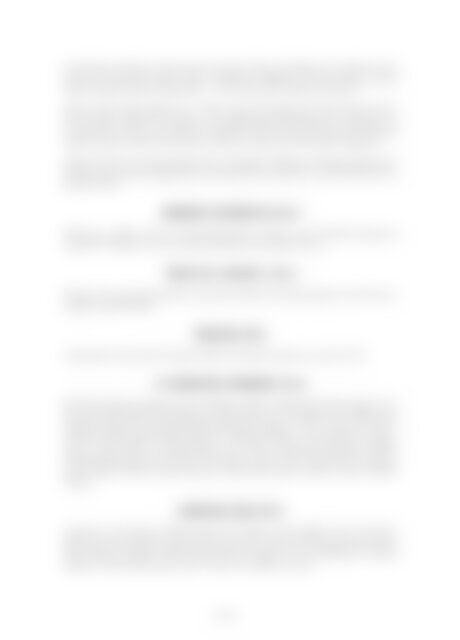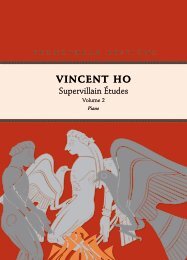Complete Piano Music Vol.8 (Preview)
Music by Douglas Lilburn | Piano The Douglas Lilburn Complete Piano Edition was established to accompany Trust Records’ award-winning recorded collection of the same name. The final volume in a series of eight, it comprises Andante Sostenuto (1964), ‘Piece in E major’ (c. 1942), Prelude (1950), ‘A Christmas Offering’ (1944), and Sonatina No.2 (1962).
Music by Douglas Lilburn | Piano
The Douglas Lilburn Complete Piano Edition was established to accompany Trust Records’ award-winning recorded collection of the same name. The final volume in a series of eight, it comprises Andante Sostenuto (1964), ‘Piece in E major’ (c. 1942), Prelude (1950), ‘A Christmas Offering’ (1944), and Sonatina No.2 (1962).
You also want an ePaper? Increase the reach of your titles
YUMPU automatically turns print PDFs into web optimized ePapers that Google loves.
In 1947 Lilburn joined the staff at Victoria University College in Wellington and completed several<br />
works that received high critical acclaim, including two symphonies, two piano sonatas, and the<br />
Alistair Campbell song cycle Elegy (1951) – a vision of the titanic indifference of nature.<br />
Lilburn composed the Symphony No.3 (1961), along with Sonatina No.2 (1962) and Nine Short<br />
Pieces for <strong>Piano</strong> (1965–66), in response to a stimulating period of sabbatical leave. Masterpieces of<br />
concentrated form, these works explore the boundaries of his instrumental writing. From this point<br />
until his retirement, Lilburn chose to take on the new territory of electroacoustic composition.<br />
Lilburn’s final years were spent quietly at home in Thorndon, Wellington, tending to his garden and,<br />
until the onset of arthritis, playing his beloved August Förster piano. He received the Order of New<br />
Zealand in 1988.<br />
Andante Sostenuto (1964)<br />
Lilburn was a solitary observer of natural phenomena, studying in great detail the living forms<br />
around him. This piece seems to be based on Lilburn’s observation of the sea.<br />
‘Piece in E Major’ (c.1942)<br />
This piece has a quasi-oriental flavour, especially noticeable in the little pentatonic cascades featuring<br />
open fourths and fifths.<br />
Prelude (1950)<br />
A hunting-horn motto braced with false-related concords gives this piece an open-air feel.<br />
‘A Christmas Offering’ (1944)<br />
This lavish Christmas package for Lawrence Baigent and Leo and Mary Bensemann includes a fanfare,<br />
four preludes (three of which appear in Occasional Pieces), a transcription of the ‘Willow Song’<br />
originally composed for Ngaio Marsh’s 1944 production of Othello, a ‘Vivace’ movement (which is<br />
also extant with the tempo marking ‘Allegretto’, inscribed by Lilburn ‘to Gwyneth Brown in appreciation<br />
1 August 1945’), two quirky diversions, and a finale of Schubertian proportions. Entitled<br />
‘Thoughts during Christmas-week 1944’, this last piece is cast as a theme with twenty-four variations<br />
and an epilogue: Lilburn’s musings often have a Yule-tide flavour but sometimes express turbulent<br />
feelings.<br />
Sonatina No.2 (1962)<br />
Composed in the Autumn of 1962, Sonatina No.2, together with Symphony No.3, provides the<br />
fullest expression of Lilburn’s last notated music before he turned to the electroacoustic medium.<br />
Spare, elegant and eloquent, both the sonatina and the symphony are rich and distinctive works that<br />
maintain a tension that keeps them taut as cords in our collective memory.<br />
PEL08 – v


















